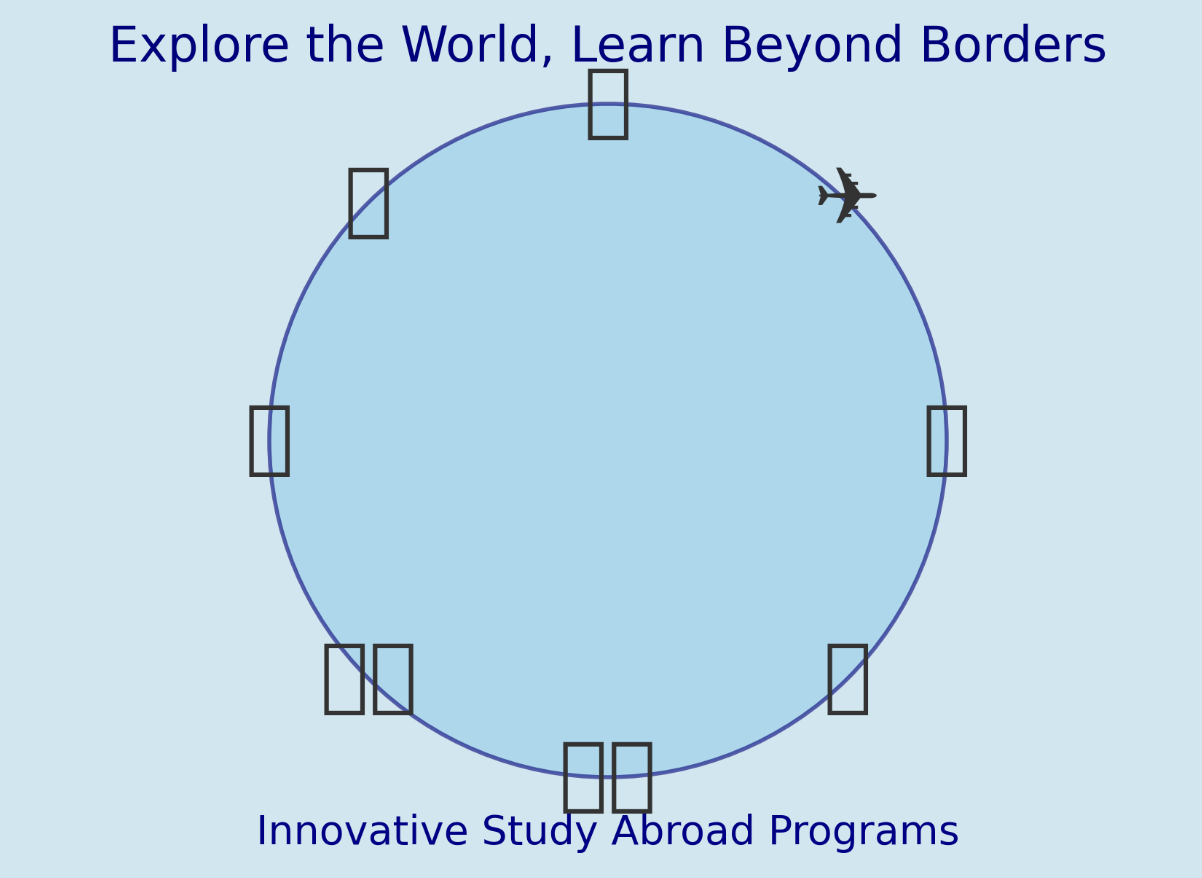1. Reconstruct Market Boundaries:
- Look Across Alternative Industries: Instead of just competing with other study abroad programs, consider what students might be choosing instead of studying abroad (like local education, online courses, internships, or travel experiences) and blend elements to create a new offering.
- Look Across Strategic Groups: Explore the needs of different student groups, such as those seeking academic prestige vs. those looking for practical experience or cultural immersion.
2. Focus on the Big Picture, Not the Numbers:
- Develop a new vision for what studying abroad can mean, beyond just academic credit or a travel experience. Consider creating programs that integrate career development, personal growth, or global citizenship.
- Map out the current state of the study abroad industry using the Strategy Canvas tool to identify factors the industry competes on and where there is room for innovation.
3. Reach Beyond Existing Demand:
- Target “noncustomers” who have never considered studying abroad, such as students in disciplines that typically don’t offer abroad studies, working adults, or those who believe it’s beyond their financial means.
- Develop programs tailored to these new segments, such as affordable short-term experiences, work-study abroad combinations, or specialized courses catering to less traditional disciplines.
4. Get the Strategic Sequence Right:
- Buyer Utility: Ensure that the new offerings are not just innovative but also directly address students’ needs and barriers (e.g., cost, safety, academic relevance).
- Price: Structure pricing to be accessible to a broader range of students, considering various financial backgrounds.
- Cost: Manage costs by partnering with foreign universities, leveraging technology, or utilizing government scholarships and grants.
- Adoption: Work with universities, parents, and students to overcome hurdles to adoption, such as credit transferability, safety concerns, and perceived value.
5. Blue Ocean Ideas for Study Abroad Industry:
- Hybrid Programs: Combine online learning with shorter, intensive in-country experiences to reduce costs and increase accessibility.
- Career-Focused Abroad Programs: Develop programs that offer internships, research, or volunteering opportunities abroad, directly related to students’ career paths.
- Cultural Immersion Projects: Create programs focused on global challenges (like sustainability, public health, or social entrepreneurship) that allow students to work on real-world problems in international teams.
- Customizable Experiences: Allow students to build their own study abroad experiences, choosing courses, internships, and cultural activities that align with their personal and academic goals.
- Virtual Study Abroad: Utilize VR and AR technologies to offer immersive cultural and educational experiences for those who cannot travel abroad.
Examples
Innovating in study abroad programs involves creating unique, impactful experiences that meet evolving student needs and interests while addressing global challenges. Here are more innovative ideas for study abroad programs:
- Sustainable Development Goals (SDG) Programs: Develop study abroad programs centered around the United Nations Sustainable Development Goals. Students can engage in courses and projects targeting specific goals like climate action, poverty reduction, or sustainable cities in different countries.
- Global Health and Wellness: Create programs focused on global health issues, traditional and modern healthcare practices, and wellness cultures around the world. These could include studying traditional medicine in India, public health in Africa, or wellness practices in Japan.
- Entrepreneurship and Innovation Labs: Establish international programs where students can collaborate with local entrepreneurs, attend workshops, and develop their own startup ideas or social enterprises. This could be particularly impactful in tech hubs like Silicon Valley, Berlin, or Tel Aviv.
- Cultural Exchange and Language Immersion: Innovate traditional language programs by integrating cultural workshops, local family stays, and community engagement projects. This can provide deeper cultural immersion and practical language application.
- Art, Music, and Theater Abroad: Create specialized programs focusing on the arts, including music, fine arts, theater, and film. These programs could be based in culturally rich locations like Paris, New York, or Kyoto, offering both historical context and contemporary practice.
- Environmental and Marine Studies: Offer programs that allow students to study environmental science, marine biology, or conservation in unique ecosystems, such as the Amazon rainforest, the Great Barrier Reef, or the Galápagos Islands.
- Political and Historical Reconciliation: Design programs that focus on historical conflicts, political transitions, and reconciliation processes in different regions, such as post-apartheid South Africa, post-conflict Balkans, or Northern Ireland.
- Technology and Society: Develop programs that explore the impact of technology on society, including studies in AI ethics, cybersecurity, digital cultures, or smart cities, in leading tech nations like South Korea, Estonia, or the United States.
- Global Internship Programs: Beyond traditional study, provide structured international internships across various industries, offering real-world experience and professional networking opportunities abroad.
- Adventure and Exploration Programs: Combine academic learning with adventure activities like hiking, scuba diving, or wildlife safaris. These programs could be set in locations offering unique natural environments and challenges, such as New Zealand, Costa Rica, or Tanzania.
- Culinary and Agriculture Programs: Offer immersive programs focused on culinary arts, food culture, sustainable agriculture, or wine-making in countries renowned for their cuisine and agricultural practices, such as Italy, Japan, or Argentina.
- Human Rights and Social Justice: Develop programs where students can learn about and engage in issues of human rights, social justice, and community development in different cultural and legal contexts.
